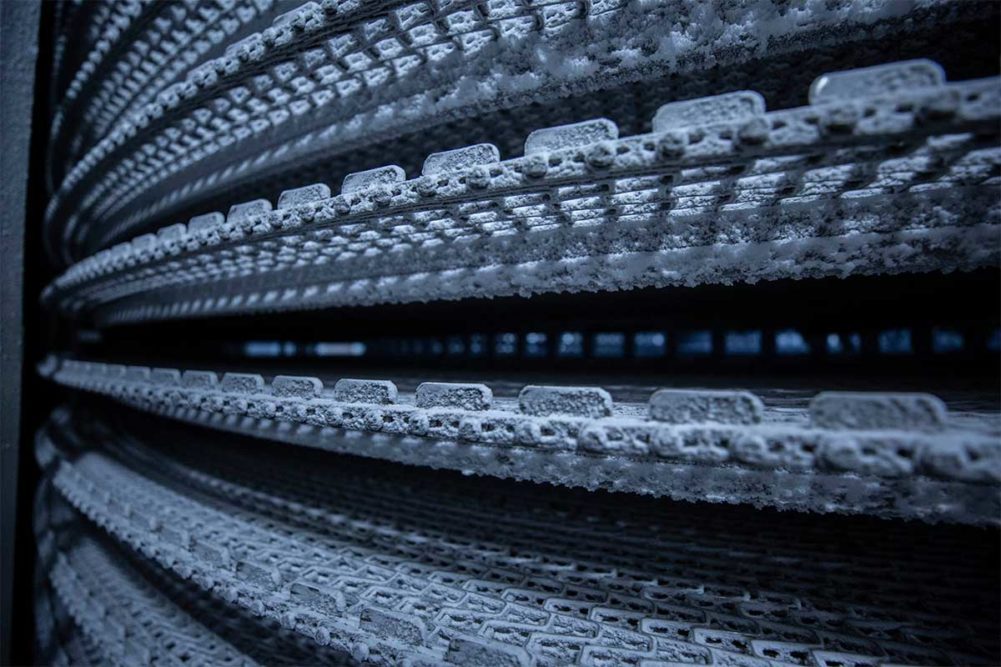Out of sight and out of mind. This often becomes an issue with blast freezers because the spiral system is operating behind closed doors and nobody checks on it, except for an occasional maintenance inspection once a day or scheduled downtime for deep cleaning every week or two.
Or it can be the bakery’s reliable tunnel freezer that is ignored between the hustle and bustle in the production and packaging departments.
With persistently volatile operating costs, bakers are giving a second look at every system, including the freezer, but that closer examination involves much more than just controlling overhead to remain competitive in the market.
“One trend is maximizing output,” noted Dan Morgan, director, food and beverage markets, Messer. “It seems like everyone is looking at an expansion. Saving labor is another theme, especially with the tight labor supply for plant personnel and higher wages.”
Saving energy is another way to bolster a company’s sagging bottom line, and there are several avenues to get to this destination. In most cases, the road map is determined by the market price, local regulations and the availability of the energy source.
“For cryogenic nitrogen, electrical power is a production input, so the liquid nitrogen acts as an energy carrier,” Mr. Morgan said. “If you switch to cryogenics or augment your production capacity with cryogenics, you can avoid having to purchase additional electricity due to the energy contained in the liquid nitrogen.”
To save energy and bolster throughput on an existing line, Mr. Morgan also suggested cryo-assisting existing mechanical blast freezers that use a large amount of electricity. That’s where nitrogen-cooled cryogenic equipment is placed in front of a mechanical freezer to boost production volume without incurring any additional electrical load.
Yet another option involves switching to a continuous process where a food manufacturing facility blast freezes baked goods or pizzas, and after packaging, loads the palletized products directly to trucks. Bypassing the holding freezer, Mr. Morgan said, enhances plant efficiency and slashes inventory on the balance sheet.
“It’s more than just-in-time manufacturing,” he explained. “It gets their product from the production line to their customers as fast as they can.”
Mr. Morgan suggested another money-saving idea. Bakeries can also convert their carbon dioxide chilling systems to liquid nitrogen refrigerants. As a byproduct of industrial processes, carbon dioxide has suffered from various supply shortages and caused operational disruptions in several bakeries during the past year. Liquid nitrogen is a primary product manufactured from air and thus has good availability.
Instead of getting hot under the collar over rising energy costs, bakers can chill out using a variety of best practices and strategic investing.
“In the short term, a good point to start looking at is the industrial process that’s being run,” said Nicola Menardo, president of TP Food Group North America, the US arm of TP Food Group. “Optimizing processes to prevent voids in production, striving for machines’ efficiency and preventing unnecessary temperature fluctuations in those machines that operate at low temperatures may be a good tactical approach.”
Additionally, bakers might investigate the viability of switching to those freezing systems that lower energy consumption.
“A spiral freezer can offer many ways to lessen its energy requirements,” Mr. Menardo added. “Airflow optimization, lower inertia of moving parts, smaller footprints and enhanced designs of thermal exchange batteries are some examples of design features that can help protect bakers from energy price volatility.”
Moreover, Mr. Menardo recommended that bakeries integrate digital systems that gather freezer performance and energy consumption data and share it with the OEM to maintain high efficiency levels for industrial freezer operations.
By using digital technologies for evaluation, Messer has recently updated the design of its cryogenic spiral freezer. Modulating cryogen control provides a precise flow rate to match heat input to the spiral system while regulating vaper exhaust to mitigate outside air from entering the freezer.
Mr. Morgan said the cryogenic spiral freezer has fewer mechanical components that simplify cleaning and routine maintenance and can increase a production line’s capacity in existing bakery facilities by shortening scheduled downtime.
“This unit can be more efficient and achieve a higher throughput in the same footprint,” he said. “Its hygienic design is easy to clean, so you can also save more money on sanitation labor.”
When it comes to freezing, bakers can find a bundle of cool ways to reduce costs through a variety of energy-efficient programs. They just need to keep their eyes open for options to improve their operations, even if those opportunities aren’t always in clear view.
This article is an excerpt from the September 2022 issue of Baking & Snack. To read the entire feature on Cooling & Freezing, click here.





